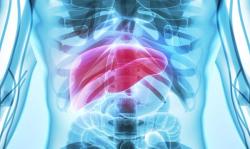
OR WAIT null SECS
Meaningful Change Thresholds Identified for Patients with Prurigo Nodularis
Additional validation of such improvement thresholds using unblinded trial data may be necessary to allow for more evidence of their utility in clinical research and practice.
A within-patient meaningful improvement for prurigo nodularis (PN) patients would mean a 4-point Skin Pain Numerical Rating Scale (NRS) change, a 2-point Sleep-NRS a 2-point change, and a 9-point Dermatology Life Quality Index (DLQI) change, according to recent findings.1
These findings were the product of a recent study conducted with the purpose of developing guidance specific to identifying prurigo nodularis improvements using patient-reported outcome (PROs) instruments. This research was led by Sonja Stander, MD, from the University Clinic Münster in Münster, Germany.
Stander and colleagues noted that improvement thresholds are necessary for assessments of treatment effects in clinical trials and practice, adding that ‘within-patient’ meaningful thresholds of improvement and between-group thresholds have both been recommended.2,3
“Currently, there is no evidence of such thresholds for interpreting meaningful change in PN patients using the Skin Pain-NRS, Sleep-NRS and DLQI total scores,” Stander and colleagues wrote. “Therefore, the main objective of this study was to estimate within-patient and between-group meaningful change thresholds for Skin Pain-NRS, Sleep-NRS and DLQI in the specific context of the PRIME and PRIME2 trials.”
Background and Methods
The phase 3 studies titled PRIME and PRIME2 had been carried out by the investigators to evaluate the effectiveness and safety of dupilumab in comparison to a placebo among adult patients with poorly managed cases of prurigo nodularis.
PRIME and PRIME2 had both taken place over a 24-week period, being done through multiple centers and following a double-blind, parallel-group, randomized, placebo-controlled trial design.
Stander and colleagues research into meaningful improvement thresholds looked at Skin Pain-NRS, Sleep-NRS, and Dermatology Life Quality Index (DLQI) as assessment tools. Additionaly clinical outcome assessments implemented over the course of PRIME and PRIME2 were also noted as supportive of the team’s analyses.
Responder definitions and between-group thresholds for all 3 of the assessment measures were found by the investigators by using anchor- and distribution-based techniques. Furthermore, the research team used data to assess the properties of measurement of the 3 instruments, looking at the instruments’ validity, reliability, and responsiveness.
The Skin Pain-NRS and Sleep-NRS instruments had been designed to assess skin pain and sleep quality, respectively, in dermatological conditions such as eczema. Skin Pain-NRS is a tool designed to identify daily worst pain on a scale of 0 - 10, and Sleep-NRS assesses morning sleep quality on the same type of scale.
Both tools implement a 7-day average score, and they need at least 4 daily ratings for baseline averages. Provided that follow-up information is shown to be incomplete, weekly averages are calculated with these instruments using available diary entries.
DLQI is an instrument which the investigators noted assesses Health-Related Quality of Life (HRQoL) during the course of the prior week over several different dermatological issues. Scores have a range of 0 - 30, and higher scores are noted by the research team as indicating poorer HRQoL.
Findings
Overall, the investigators’ research involved assessing the results of 311 individuals. The research team noted that the subjects in the intention-to-treat population had an average age of 49.5 years and added that 65.3% were female.
The team were able to find thresholds for within-patient improvements. The investigators reported that the following were meaningful as change thresholds among prurigo nodularis patients:
- 4.0 points for Skin Pain-NRS;
- 2.0 points for Sleep-NRS;
- 9.0 points for DLQI total score.
The research team found that meaningful shifts between groups were seen inimprovements of 1.0 point on the Sleep-NRS, 1.5 points on Skin Pain-NRS scores, and 4.0 points in subjects’ DLQI. The investigators added that all 3 of these instruments were found to have adequate-to-good psychometric properties.
“To conclude, Skin Pain-NRS, Sleep-NRS and DLQI are fit-for-purpose to assess patient experiences of skin pain, sleep quality and HRQoL in (prurigo nodularis),” they wrote. “These instruments yielded reliable and valid patient data, and changes in scores can be easily interpreted by applying the derived meaningful improvement thresholds. Further validation of these thresholds in unblinded trial data will further inform their utility in (prurigo nodularis) clinical studies and practice.”
References
- Stander S, Kim BS, Guillemin I, Rhoten S, Wratten S, Brookes E, et al. Estimating meaningful change thresholds for Skin Pain-Numeric Rating Scale, Sleep-Numeric Rating Scale and Dermatology Life Quality Index in patients with prurigo nodularis. J Eur Acad Dermatol Venereol. 2024; 00: 1–9. https://doi.org/10.1111/jdv.19800.
- Food and Drug Administration. Guidance for industry patient-reported outcome measures: use in medical product development to support labeling claims. 2009 [cited 2023 Apr 5]. Available from: https://www.fda.gov/media/77832/download.
- Trigg A, Griffiths P. Triangulation of multiple meaningful change thresholds for patient-reported outcome scores. Qual Life Res. 2021; 30(10): 2755–2764.


